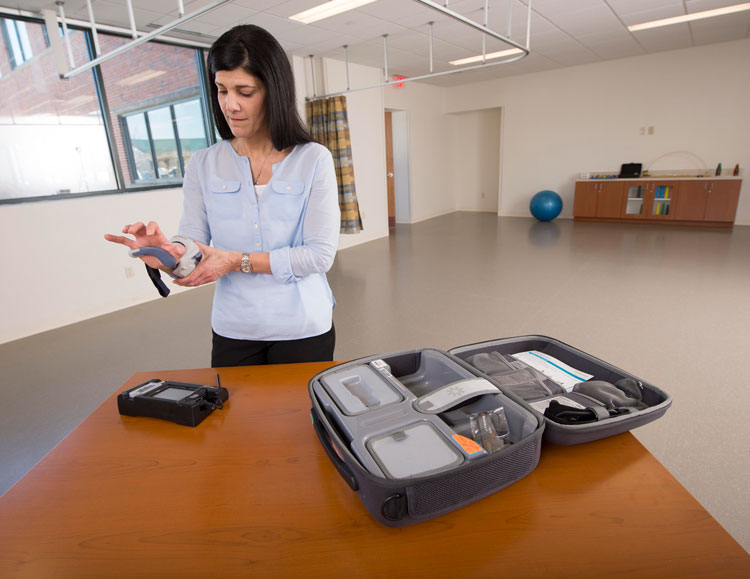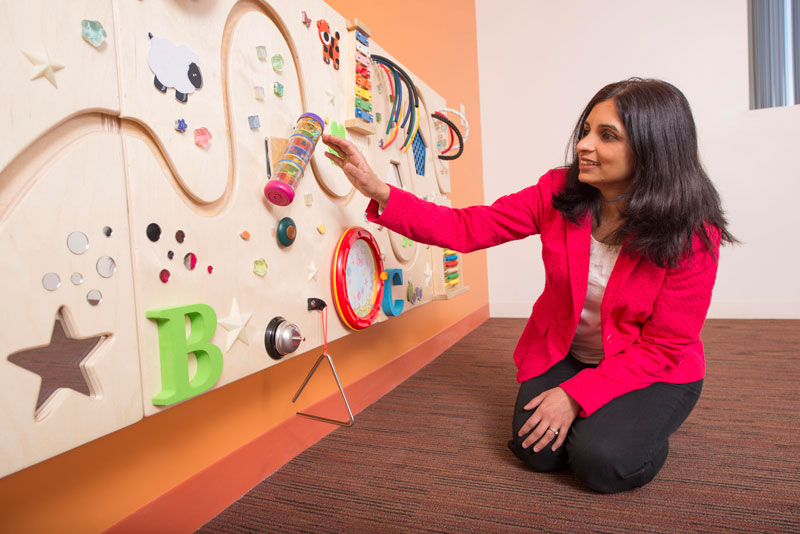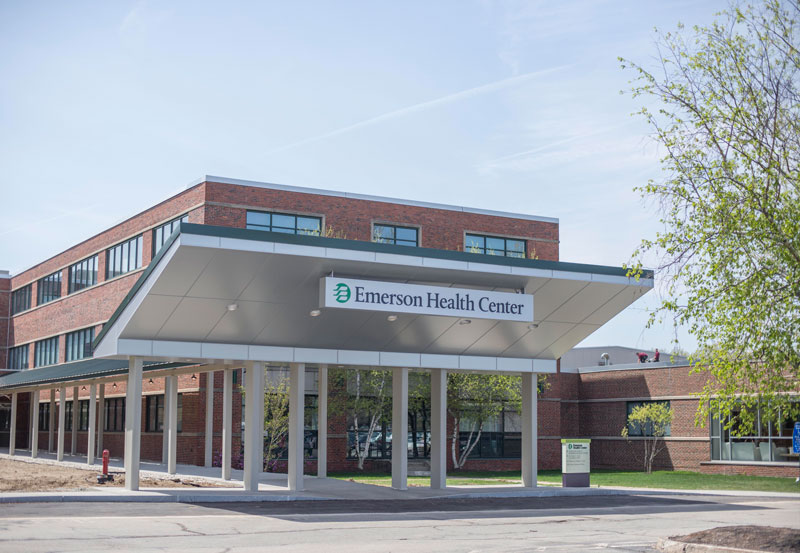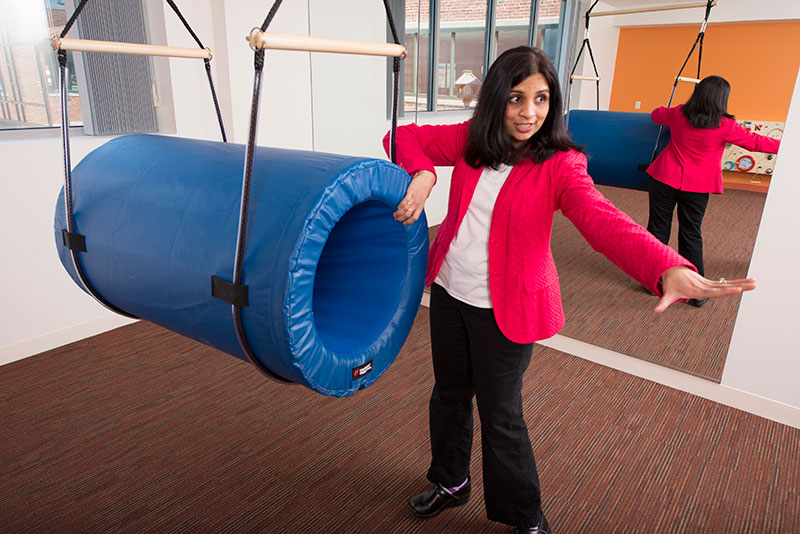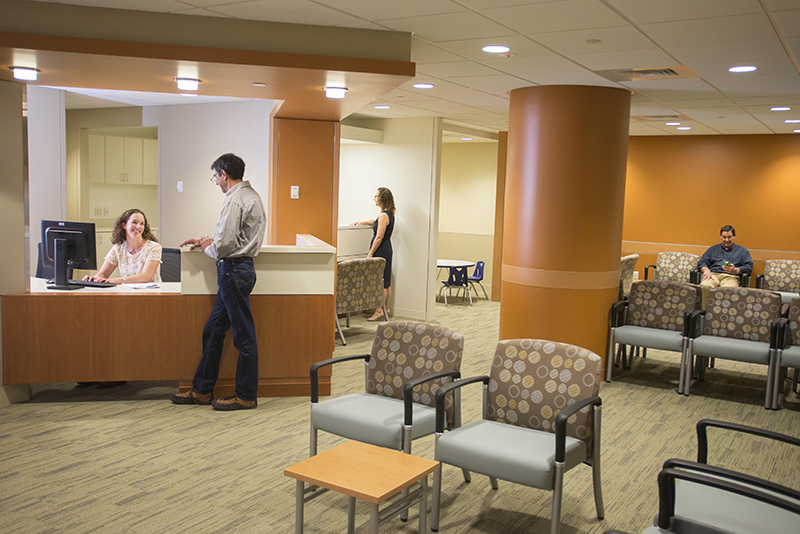Is your young child hesitant or slow to master physical skills such as playing catch, riding a bike, or climbing and descending stairs? One possible issue holding a child back is poor functional vision. Here are some easy, at-home exercises to improve your kid’s vision and help them gain the confidence they need to explore their environment and keep up with their peers.
Read moreOlder Driver Confidence is Not Related to Older Driver Safety
Kristen Dixon Keilty, an occupational therapist and driver rehabilitation specialist, explores why older driver confidence does not correlate to driver safety, and how you can help someone gain insight into maintaining and improving safe driving habits.
Read more2 Strength Training Exercises for Runners
Are you training for our 5k Run~Walk on June 4, but the cold and ice has you hesitant to run outdoors? Try these indoor exercises to help strengthen your running muscles, from Rachel Kim, a physical therapist at our Center for Rehabilitative and Sports Therapies.
Read moreThere’s a Shark in Our Aqua Therapy Pool!
Here’s how one pediatric patient at our Center for Rehabilitative and Sports Therapies is utilizing both land and aqua therapy to form a comprehensive treatment program. (And having fun doing it!)
Read moreWearing o' the Blue!
March is associated with a number of things: the arrival of spring, longer daylight hours, warmer temperatures and St. Patrick’s Day! But did you know that March is also Brain Injury Awareness Month?
Read moreBoxing for People with Parkinson’s Disease
Research shows that in combination with the appropriate medication regimen, exercise assists in slowing the progression of Parkinson’s disease (PD). Some research even shows that exercise is neuroprotective, meaning it helps to protect and preserve the area of the brain that is being affected with PD!
Read more4 Tips on How to Wear a Backpack Safely
Each September, the American Occupational Therapy Association promotes School Backpack Awareness Day! Here are some tips to help your child wear his or her backpack safely this school year.
Read moreRecognizing the Signs and Symptoms of a Concussion
In today’s fast-paced, high-intensity sports culture, it’s important for parents and coaches to be aware of the signs and symptoms of a concussion so that their athlete can get the right treatment as soon as possible. Here are some signs and symptoms to be aware of, along with answers to some common concussion-related questions.
Read moreThe Dr. Robert C. Cantu Concussion Center Is Now Open!
Emerson Hospital's state-of-the-art Dr. Robert C. Cantu Concussion Center is now open! Named in honor of Dr. Cantu, one of the world's leading experts on concussion, the center is custom-designed for optimal care of patients who have a brain injury and features the latest therapies for the diagnosis, treatment, and management of all types of concussive brain injuries.
Read more5 Ways to Prevent the Summer Slide
Each September, we hear from classroom teachers who bemoan how they have to spend the first six to eight weeks playing catch-up with students who have lapsed a bit in language and motor skills during summer vacation. To help your kid return to school ready to learn, try some of these fun and easy ways to encourage language and motor development throughout the summer.
Read moreOur New Location Is Now Open!
The new Concord location of the Emerson Hospital Center for Rehabilitative and Sports Therapies opened today at 310 Baker Avenue in Concord! This facility has expanded treatment and administrative areas, and we’re excited to begin using the new therapy pool, neuro gym and pediatrics gym. In addition to the photos we posted last week, here are a few more shots of the interior areas of the new space. When visiting for an appointment, look for us under the Emerson Health Systems sign.
The Secret Behind State-of-the-Art Equipment
Emerson’s Center for Rehabilitation and Sports Therapies Concord facility is moving to a new location. The new center is outstanding both in design and the scope of services that will be provided to our community. I gave a tour the other day and was asked, “What new state-of-the-art equipment has been added to the facility?”
Read moreJoin the Team: Patient-Centered Total Joint Education Classes
This is without a doubt one of the best times of the year if you are a sports fan, especially a football fan. The Super Bowl is always special, but one particular Super Bowl sticks out in my memory: Super Bowl XXXVI, with the New England Patriots and the St. Louis Rams.
At that Super Bowl, the New England Patriots checked their egos in the locker room when they chose to be introduced on the biggest stage of sports not individually by name, college and position – but as a team. In a 2010 interview, NFL quarterback Steve Young said, "that might be the most important moment we've seen in football in the last 20 years." Was it one of Bill Belichick’s mastermind coaching strategies, or was it a team decision? Either way, it got the attention of the entire sports world!
The Patriots won that game – not by a dramatic Hail Mary touchdown pass, or an astounding interception. No! It was won by a kicker! And if the team had not done everything possible to get the ball down the field into a position where that field goal attempt was possible, this story would have a different ending. Football is a team game, and the team works together to achieve their goal: winning!
Well, this is also without a doubt one of the best times in healthcare and at Emerson Hospital! Health care practitioners at Emerson are choosing to check their ego in the parking lot and enter the hospital as part of a team. Something special happens when a team works together; all members are equal partners working towards the same goal. This is the approach Emerson has taken for years with total joint replacements, except one key member of the team was not previously included in the process from start to finish: the patient! What? Yes, we admit it – the patient was omitted. We always put the surgical, medical and safety needs of the patient first, but if we don’t include the patient in the planning process, how can we be sure we are really meeting their personal needs?
Health care is changing, and changing fast. The new focus is on the patient experience, and what better way to ensure the patient has a good experience than to include them in the process? In February, Emerson Hospital is launching patient-centered total joint education classes for those who are considering or have determined it is time to have that painful hip or knee replaced. In the Preparing for Hip Replacement and the Preparing for Knee Replacement classes, participants are encouraged to bring a friend or family member and meet some of the team members who will be providing care throughout their entire hospital stay.
You already know your top notch surgeon. You will also meet a member of the nursing team, rehabilitation, both physical therapy and occupational therapy. You will meet a member of your care management team, pharmacy and home care. Each member of the team is there to give you a virtual tour of what your joint replacement experience will be like. The goal? To bring you and a family member or friend into the team! Call it a game day strategy. The team wants to know your goals. What outcome to you expect? Do you want to be able to play with your grandchildren, play tennis – or do you simply want relief from your pain? What you want is exactly what we want for you, and the more you know about your game day experience, the better equipped we are as a team to ensure success.
When each and every team member – the patient, their family and friends, the surgeon, and the care management team – has the game plan, how can you lose?
GO TEAM!
Register online for the Preparing for Hip Replacement or the Preparing for Knee Replacement classes, or call 978-287-3777 for more information.
Coming Soon: Our New Concord Location!
Have you heard? This Spring, Emerson’s Center for Rehabilitative and Sports Therapies will move to a new, more expansive location at 310 Baker Ave, Concord. Construction is still underway, but once completed, the new Center will have a convenient first-floor location with central reception, flexible hours to accommodate a busy schedule, a dedicated pediatric gym, private physical therapy rooms, an aquatic therapy treatment pool, and new, state-of-the-art equipment. These photos show a behind-the-scenes look at the progress, as well as the beginnings of our therapy pool:
Tracking Patients' Progress: How Are We Doing?
In the 1967 movie The Graduate, Ben, played by Dustin Hoffman, gets career advice from Mr. McGuire, played by Walter Brooke: “are you listening? One word: plastics.” Not bad advice from our celluloid heroes. If Mr. McGuire could give one-word career advice to those of us in rehabilitation, I think it would be “measurements.”
Standardized outcome measures allow us to measure our success by speaking the same language when comparing diagnosis and functional outcomes. It is a means to quantify the amount of change in a patient’s progress and ultimately measure how we perform as a clinic. As a clinic, we have been collecting outcome measurements on our patients, grouping the measurements into diagnostic categories, utilizing standardized tests and analyzing for statistical significance. The outcomes tell the story.
When you send your patients to the Center for Sports Rehab and Specialty Services, they get better. Significantly better. Not only is pain and range of motion improved, but also their function improves and the patients move toward accomplishing their goals. In my travels through rehabilitation networks, I have found more often than not that the patient is told what is best for their recovery and what their goals should be. We have shifted our focus on the patient utilizing the Patient Specific Functional Scale (PSFS) as one of our tools of measurement. This tool is all about the patient, what they feel their limitations are, what activities of daily living they have difficulty performing and what they want to accomplish while in rehabilitation. Measurements are key to the patients’ success and ours.
We are committed to collecting standardized outcome measures at evaluation and discharge for individuals participating in SLP, OT and PT. This is a means to quantify the amount of change in a patient’s progress and as a clinic as a whole. The standardized outcomes used in the clinic were chosen due to their validity, reliability and responsiveness to change. The above charts show some of the outcomes from 2013 demonstrating significant improvement in symptoms and function in a wide variety of disorders or diagnoses.
Enjoy the Journey: On Gadgets, Health Apps and Self-Directed Care
Every summer I get a bit nostalgic. I think back to when our kids were young, and we would pack the family car, a four-door sedan the size of a living room. It felt like driving a couch. The kids would pile in the back seat, and my husband and I sat in the front, loaded up with coolers of food and a thermos full of water.
Don't forget the maps! Large unruly maps that would never fold back up again. We would spend days highlighting the route on the map and visiting AAA to get books on our glorious travel destination.
The saying "enjoy the journey" must have been coined by someone who never traveled any distance in a car with kids and maps that were old and outdated. One wrong turn – or even worse, the dreaded bright orange detour sign – and you could feel the tension rising in the car. I would frantically spin the map around 360 degrees clockwise, then counter clockwise, folding and unfolding it in a variety of ways, snapping the creases with my fingers, hoping somehow this ritual would help me find out where the heck we were and how I was going to get us back on track.
Today, the word “recalculating” is joy to my ears! Whatever the map app voice on my phone says, we follow. No more maps, no more visits to AAA. It is glorious! Bring us home, map app woman. We are a tuned-in audience.
This leads me to a thought on apps in general. The market is flooded with health-related applications, from iPhone pedometers to the wrist band Fit Bit. Health applications that are geared toward the non-clinician intend to help the consumer self manage a variety of diagnoses, such as diabetes or asthma, and even help decide if a skin lesion is potentially melanoma.
I love the voice on my phone – she gives me directions to map my travels – but when directions involving my health come from my phone, that’s a different consideration. When making important health care decisions, it is important that my health care provider knows me, my health care goals and my resources to achieve those goals. The health application on my phone does not know me or take those things into consideration.
I support apps used for motivation, tracking exercise and weight management goals and improving population awareness of fitness and movement. However, I am concerned that at the expense of convenience, technology and gadgetry, we lose what health care in general and the rehab profession specifically is striving for: quality, collaboration, value and innovation.
Although I do feel that my map app voice and I have a deep relationship, the minute she starts telling me to eat my vegetables or go to the doctor, that’s when AAA books and paper maps make their return.
Enjoy the journey!


